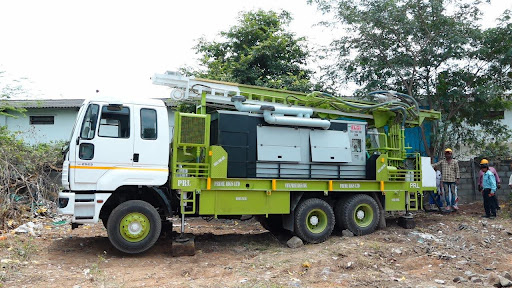Drilling rigs are powerful, complex machines essential to industries ranging from water exploration to oil, gas, and geothermal energy. But working with them requires more than just technical know-how—it demands discipline, safety awareness, and operational precision. Whether you’re on a land rig in a rural area or aboard an offshore platform, understanding how to work with drilling rigs safely and efficiently is key to project success and personal safety. From avoiding costly breakdowns to preventing injuries and improving productivity, mastering rig operations is a long-term game. In this blog, we’ll explore practical tips to help rig workers, engineers, and site managers optimize performance, reduce risk, and stay compliant when working with a portable borehole drilling machine in any environment.
1.Prioritize Rig Safety from Day One
The first rule of working with drilling rigs is safety first—always. Drilling environments can be hazardous due to high pressures, moving equipment, flammable substances, and extreme weather. All personnel should complete mandatory safety training, understand emergency protocols, and wear the required personal protective equipment (PPE) at all times. Frequent safety drills and toolbox talks should be standard operating procedure.
2.Know Your Rig Inside and Out
Every drilling rig has its own specifications, controls, and limitations. Before operation, take time to study the machine’s manuals, understand the control systems, and inspect key components like the mast, rotary table, mud pumps, and power units. Understanding how your rig functions will help you make smarter decisions under pressure and detect signs of wear or malfunction early.
3.Conduct Daily Pre-Operation Inspections
One of the simplest yet most effective habits is a daily walkaround inspection. Check fluid levels (oil, hydraulic, coolant), inspect hoses for cracks, test brakes, and ensure that safety guards and emergency stops are operational. Documenting these checks helps track machine health and prevents unexpected breakdowns during operations.
4.Communicate Clearly and Consistently
In drilling operations, miscommunication can be dangerous. Use clear verbal cues, hand signals, or radios to ensure everyone on-site is on the same page—especially during lifting, tripping, or emergency procedures. Establish a chain of command and follow protocols for reporting incidents or equipment issues to avoid confusion and delays.
5.Avoid Overloading or Overdrilling
Rigs have performance limits for a reason. Pushing a drilling rig beyond its rated capacity—such as exceeding torque or depth limits—can cause equipment failure, structural damage, or personal injury. Always refer to manufacturer guidelines, especially when drilling in tough or unfamiliar geological formations.
6.Keep the Rig Site Organized
A cluttered rig site is a dangerous one. Cables, tools, hoses, and other gear should be stored properly and secured. Mark hazardous zones, keep access pathways clear, and dispose of oil or chemical spills promptly. A clean, organized site reduces trip hazards, improves workflow, and boosts overall team morale.
Working with a drilling rig machine demands a blend of knowledge, discipline, and respect for the machine and the environment. By following these 10 tips—focusing on safety, maintenance, communication, and efficiency—you not only improve your day-to-day operations but also contribute to long-term project success and personal well-being.



